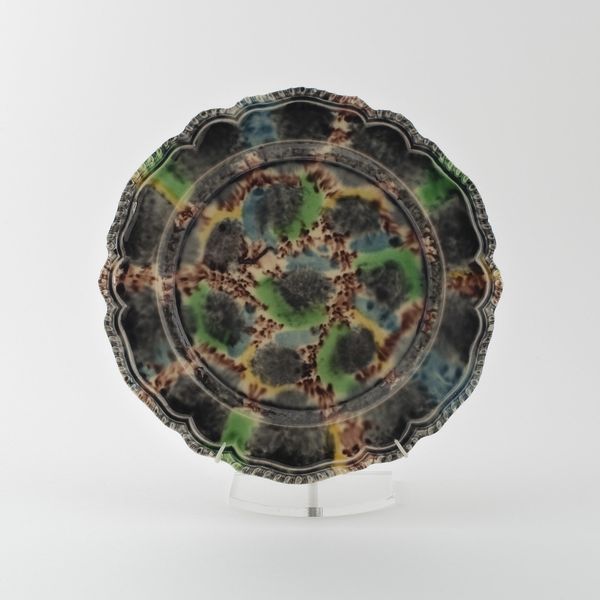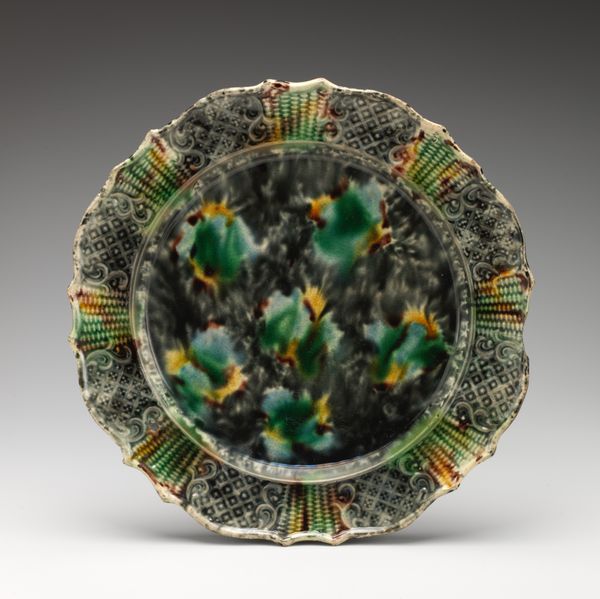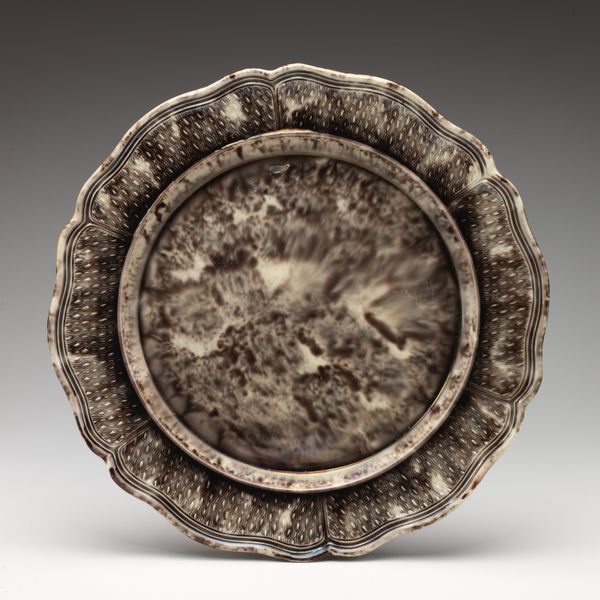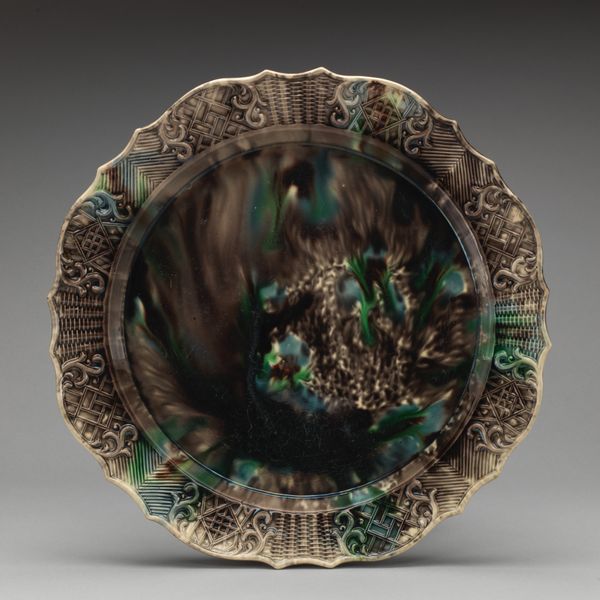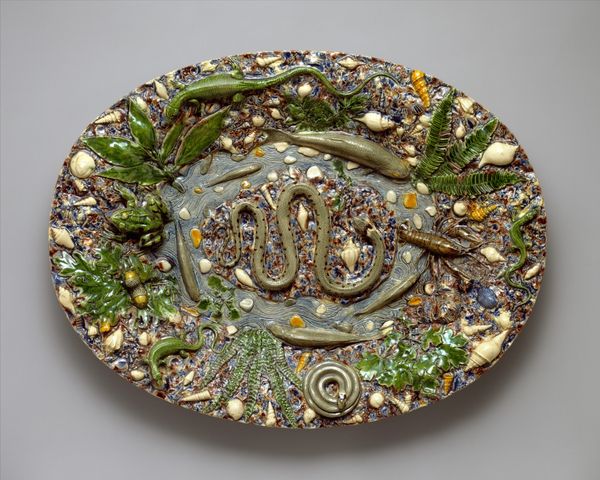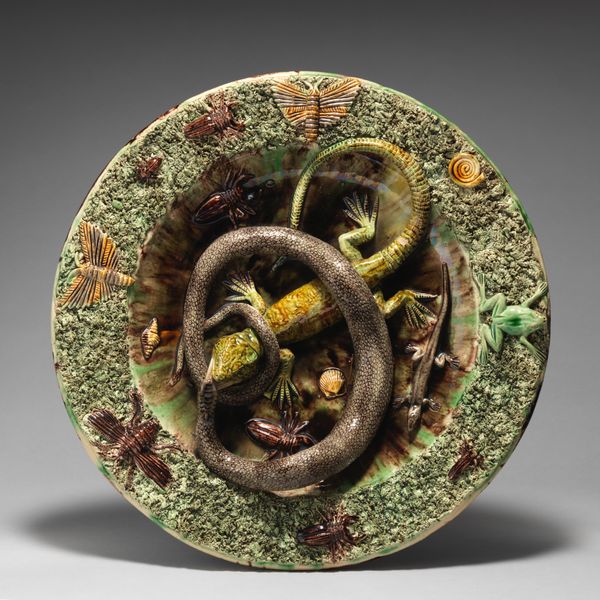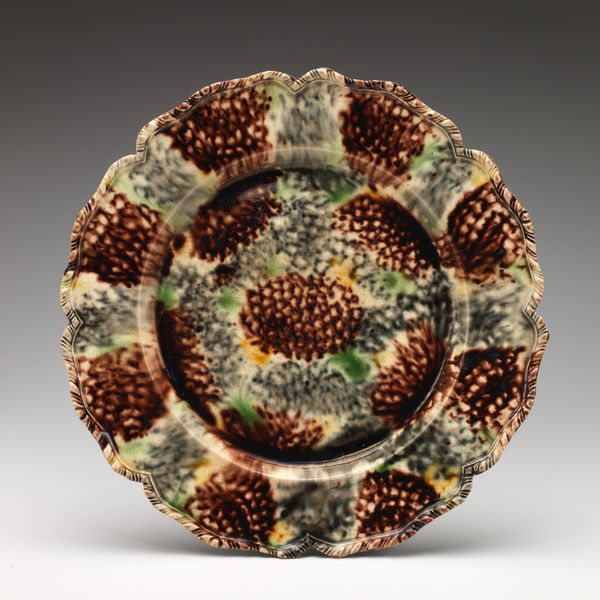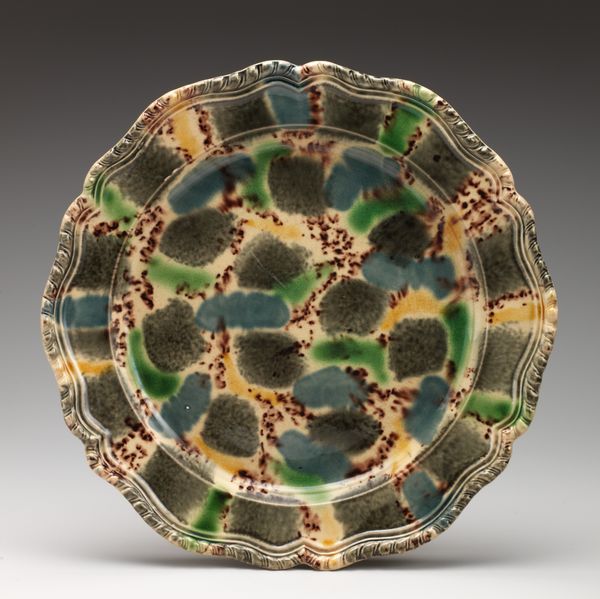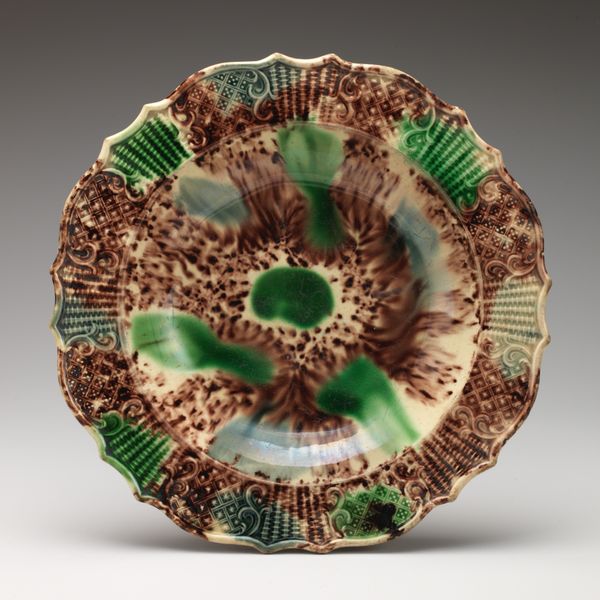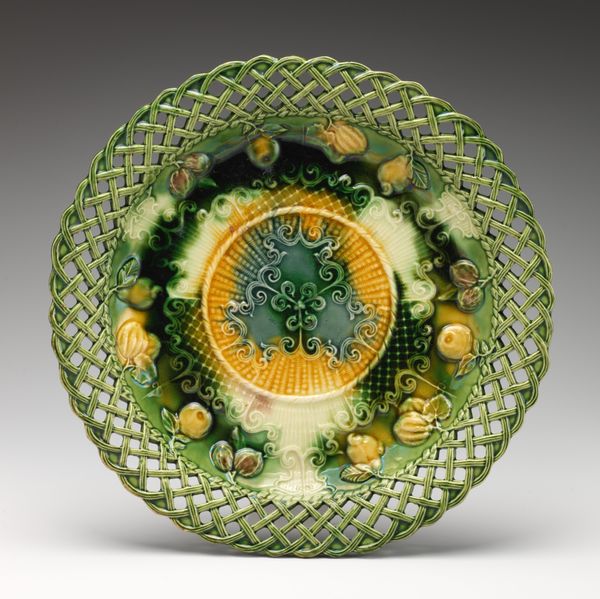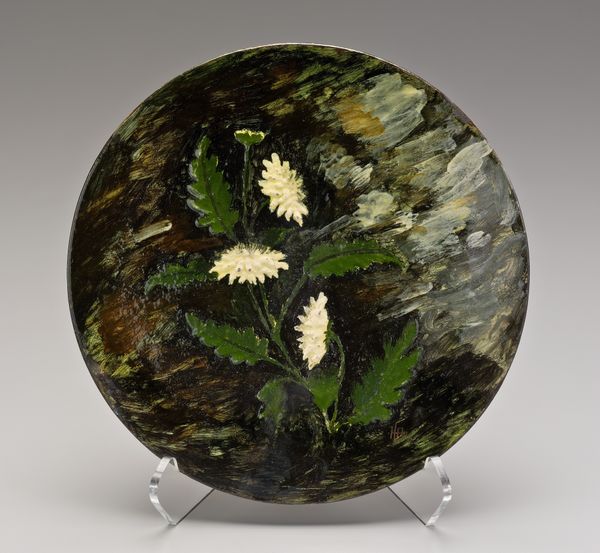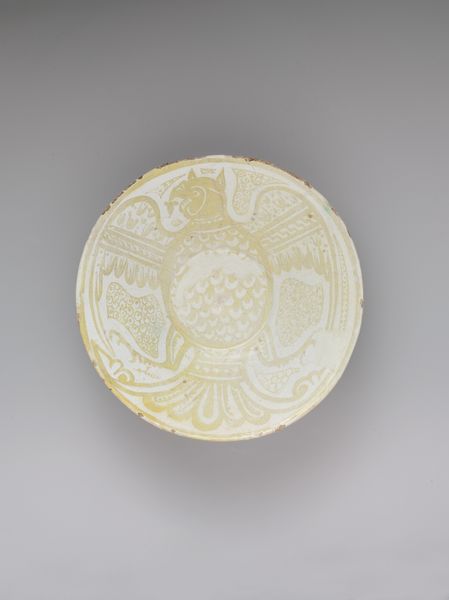
ceramic, earthenware
#
ceramic
#
earthenware
#
stoneware
#
ceramic
#
decorative-art
Dimensions: Diameter: 9 3/8 in. (23.8 cm)
Copyright: Public Domain
Curator: Let's turn our attention to this "Plate," a Whieldon type ceramic earthenware from between 1750 and 1799. You can currently find it residing at The Metropolitan Museum of Art. Editor: Well, hello there, groovy granny! My first impression? It’s like something you'd find at a witch's picnic… very "earthy enchantress," if you will. Sort of soothing, but also… maybe a little ominous. Curator: Interesting. That visceral response reflects how deeply ingrained this style was within the decorative arts of its time. We see Rococo sensibilities intertwined with a nascent embrace of "natural" forms. Whieldon ware, in particular, allowed for greater spontaneity in its designs. Think about the context – industrialization was burgeoning. People craved connection to the organic. Editor: Totally. I can practically smell the damp forest floor just looking at this thing. It also gives me major vintage wallpaper vibes—like the kind in your eccentric aunt’s parlor where the floral patterns stare back at you. Curator: And there's an element of class at play. Ceramic objects were becoming more widely accessible during this period. Pieces like this "Plate" represent a complex negotiation. Was it meant to emulate luxury goods, or was there a genuine desire to embrace simplicity and handcrafted aesthetics, at least in appearance? Editor: It makes me wonder what was served on it back in the day... Mushroom soup? Poisoned apples? Kale chips? And does that pattern have any specific symbolic meaning? Curator: We see this particular marbled, mottled appearance time and again. As far as readily identifiable symbolic meanings? Hard to say for certain. But certainly, by evoking these biomorphic abstractions, its original makers were nodding to a specific idea of beauty and sophistication linked to the natural world. This piece serves as an incredibly specific, tangible representation of a moment in time, in society, and within shifting understandings of the concept of domestic beauty. Editor: Well, I won’t lie—I’d happily eat off it! It definitely has character, wouldn't you agree? Though, maybe I'd stick to salads just in case. Curator: I appreciate your perspective; it prompts consideration about the daily lives these objects occupied. Thank you.
Comments
No comments
Be the first to comment and join the conversation on the ultimate creative platform.
